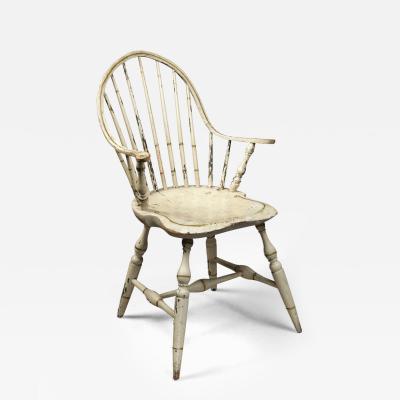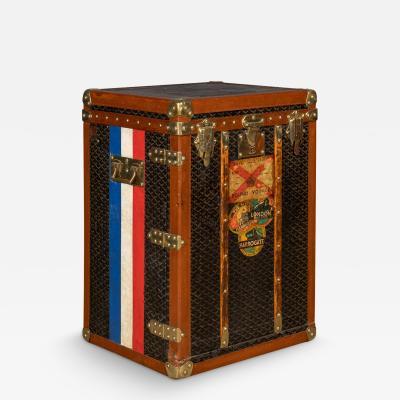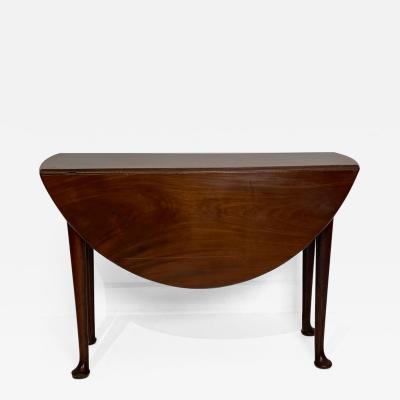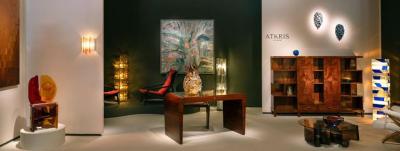What's it Worth? Windsor Chairs
Windsor chairs were once the seating of choice for many in Colonial and early Federal America. The market for these American icons is now shaped by their rarity, aesthetic appeal, condition, and soaring values. Prices for period Windsor chairs now range from about $1,000 to $200,000, with rumors of private sales of over $500,000.
“Windsor chairs are very hot right now,” says Charles Santore, author of The Windsor Style in America. Santore notes that Windsors are now so popular they cross over several distinct markets and appeal to collectors whose primary interests range from early American furniture and folk art to mid-twentieth-century goods and fine art. Santore notes that when a good Windsor becomes available, collectors shouldn’t hesitate. He cites the instance of a wonderful low-back Windsor that sold for over $200,000 at a Philadelphia antiques show. “Whoever bought it probably wasn’t looking for a low back, but just wanted a great Windsor,” he says. “That chair could’ve sold many times over, but the buyer got it because he was the first person there and didn’t hesitate to take out his checkbook.”
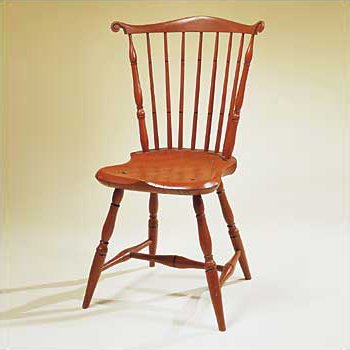 | 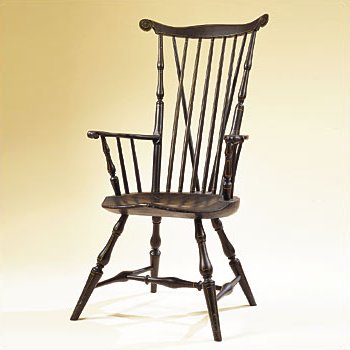 | |
| Windsor Fan-back Side Chair Coastal Massachusetts ca. 1790 Value: $4,500 This side chair was made about the same time as the Nantucket armchair and is stylistically related. In addition, the chair has a nice stature and a lovely shield-shape seat. But it seems to fade on closer inspection of its detailings. The turnings do not show as much variation between what author Charles Santore calls the “thicks” and the “thins.” The seat has a nice shape, but it seems heavy to the eye because the edge is not well chamfered. But what the side chair does have is a spectacular finish—great “tomato soup” red paint with black pin-striped detailing and an attractive amount of wear. This finish, which dates to the first half of the nineteenth century, attractively displays the history of the chair and shows that a second coat of paint can still be a plus. Schorsch says that this paint finish on a chair with a stronger form could easily reach into the six figures. Courtesy of David A. Schorsch – Eileen M. Smiles American Antiques | Windsor Fan-back Armchair Nantucket, Massachusetts ca. 1790–1800 Value: $75,000 A Windsor chair from Nantucket Island is one of the icons of Windsor design—and this example has all the bells and whistles. The dramatically raked legs elegantly balance the tall upper carriage with back braces. The profile of the leg turnings is so robust that when it is repeated and elongated in the back posts, it still retains an attractive form. The seat is deeply shaped, and the edge is sharply undercut to produce a graceful lightness. The arms have a serpentine curve and carved knuckles, and the crest has well-defined terminals. There are even ring turnings on the cross-stretcher. Additionally, the chair can be stylistically attributed to Nantucket chairmaker Charles Chase, and it descended in the prominent Coffin family of Nantucket. Dealer David A. Schorsch says if anything can be criticized, it might be the paint, which is a Victorian-era finish of black-and-yellow pin-stripe and little wear over earlier coats of green and white. Courtesy of David A. Schorsch – Eileen M. Smiles American Antiques |
“Buyers are looking for form, condition, surface, and evidence of the craftsman’s skill—all these factors affect value,” says dealer Wayne Pratt of Woodbury, Connecticut, and Nantucket, Massachusetts. When assessing a chair, Pratt initially looks to see if the form, size, and color please him. If so, he conducts a systematic inspection. He starts by turning the chair over to examine the tips of the feet for damage or repairs. He then feels whether the turned legs and stretchers have a slight oval shape from shrinkage. He checks the underside of the seat for oxidation, hand-plane grooves, and for evidence of the chair’s paint history. Pratt then turns the chair right-side up, runs his hands over the crest, and compares the turnings of the back posts and arm supports with the legs. He also inspects each spindle for damage, repairs, and replacements. Throughout this process, Pratt evaluates the skill of the craftsman, obvious from the turnings, any hand-carved elements, and details such as the shallow carved channel that outlines the spindle area on the seat. Finally, Pratt makes sure that the finish is appropriate—that paint is worn in the right places, such as handholds, and that there is a difference in how the paint has aged in separate areas, such as the fronts and backs of the spindles.
Virtually all Windsor chairs were originally painted, but most have now been stripped or repainted. According to David A. Schorsch, a dealer from Woodbury, Connecticut, an original paint surface can increase a chair’s value one hundred times over because of its rarity. Since some unethical craftsmen are now specializing in re-creating the look of old paint, buyers should depend on trusted dealers.
In general, dealers will agree on certain points: a good Windsor chair with a period paint finish starts at about $6,000 to $8,000; an armchair is worth more than a side chair; an early chair tends to be more valuable than a later example; and a maker’s brand, which is very rare, will increase the price. Obviously, this is not a market for comparative shopping, only competitive buying. As one dealer says: “They’re only going up in value.”
Suggested Readings:
Charles Santore, The Windsor Style in America, vols. I and II (Philadelphia: Courage Books, 1981).
Nancy Goyne Evans, American Windsor Chairs (New York: Hudson Hills Press, 1996).
Ted Jones writes about antiques, art, and architecture. He is the author of Carnegie Libraries Across America (1997).
This article was originally published in Antiques & Fine Art magazine, a fully digitized version of which is available at www.afamag.com. AFA is affiliated with Incollect.com.
 |















